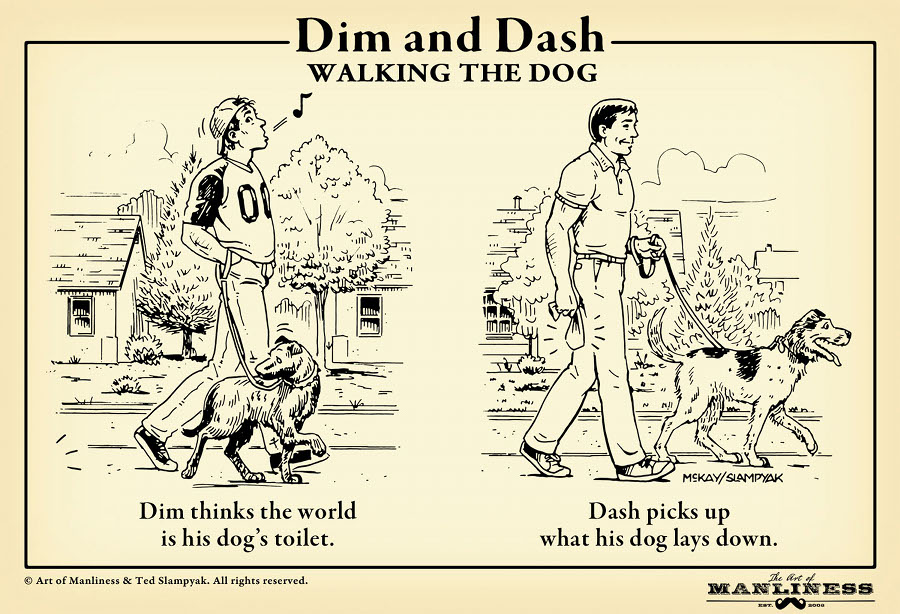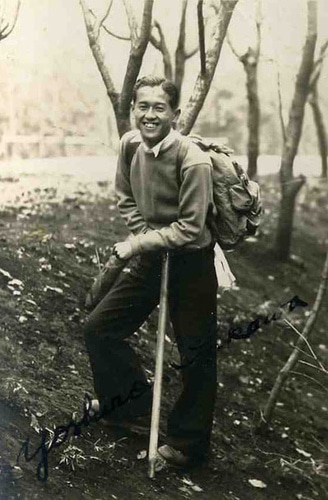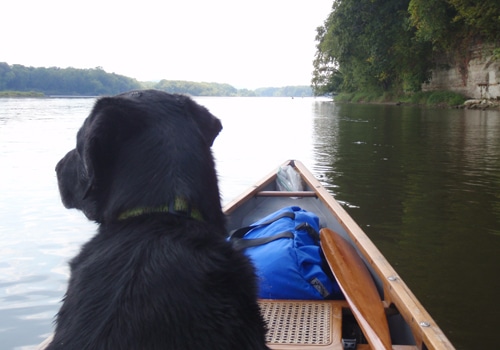
The companionship of a dog can be one of the most rewarding experiences for a wilderness traveler. As opposed to humans, they are quiet, low-maintenance, and easy to please. Dogs cannot be jaded; everything is new to them. If you don’t believe me, watch your dog at a rest stop. The pet exercise area is like a giant olfactory newspaper, and my dogs must read every article, especially the ones left behind by an interesting female.
But like anything, the key to a successful trip is preparation, and then more preparation. There are many more considerations in your wilderness trip prep work when taking a dog, and failure in one of them can create drama. You are responsible for the health and safety of your companion.
Training
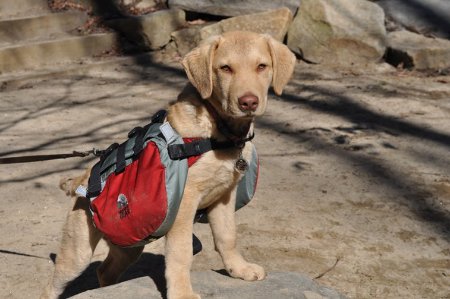
You don’t need a dog with a Ph.D, but be honest with yourself. Does your dog listen to you? When you give a command, does she* listen and respond? I spent a long time training Gracie, my Black Lab, to respond to the important voice commands. She doesn’t roll over or play dead, as they are cute tricks but have no value other than entertaining kids.The important commands that need consistent responses are:
Whoa: I use this for stop, freeze, don’t move. Useful for bird dogs so they don’t flush a bird when they’re on-point; it’s also useful when they see a squirrel and start chasing it across the street. Whoa can save a life.
Come: Self-explanatory.
Down: Lay down, don’t move until I tell you it’s okay.
Okay: We’re cool. As you were.
Leave it: Whatever is in your mouth, drop it. If you’re sniffing a dead crow, don’t even think about it.
Whatever words you decide to use, you need a dog that will stop, come back, lay down, and drop the thing in her mouth.
Non-essential but useful is also the hurry up, which is basically urinate and defecate quickly. Useful at rest stops.
Of course, you don’t need all these commands if you’re going to keep your dog on a leash all the time, but that takes away a lot of the fun for both you and your dog.
Aggression
Whether it be toward humans, other dogs or any wildlife, an aggressive dog has no place in the wilderness. It doesn’t matter if it only happened once. If your dog is aggressive, leave her home. There are too many ways this can go wrong. I don’t need to list them.
Breed and Temperament
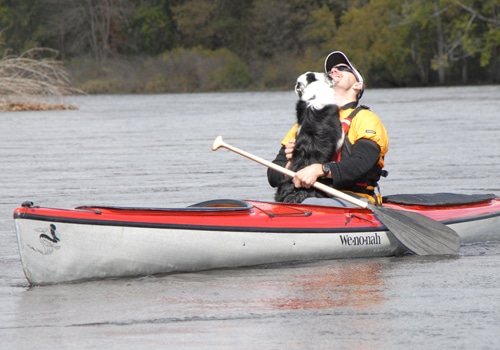 Let’s be honest. We are asking a lot of a dog to do the things we want her to do. If a dog hasn’t seen a porcupine before and won’t whoa, you better have your Leatherman pliers and a day off trail to spare. My experience is that most smaller terriers don’t handle things well. Not that yours won’t, but a Jack Russell that sees a porcupine will most likely bark bring it on! in dog language and go for the throat. That’s what they were bred to do, and they do it well.
Let’s be honest. We are asking a lot of a dog to do the things we want her to do. If a dog hasn’t seen a porcupine before and won’t whoa, you better have your Leatherman pliers and a day off trail to spare. My experience is that most smaller terriers don’t handle things well. Not that yours won’t, but a Jack Russell that sees a porcupine will most likely bark bring it on! in dog language and go for the throat. That’s what they were bred to do, and they do it well.
The dogs I have known who handle wilderness tripping the best are usually smart and compliant. Retrievers of all sorts tend to do very well, as do Chesapeakes. Pointers and other sporting dogs can do well, but a lot of that is individual temperament. Our German Shorthair, Winnie (R.I.P.), was great, but she was a very chill GSP. Some are more high-strung. Standard poodles tend to do very well with a good short clip. With a show cut, other dogs and animals will mock them. Our Great Pyrenees puppy Alice is yet unproven, but she does appear to be a burdock magnet, so consider coat maintenance when taking longer-haired dogs.
Border Collies can be wonderful. My friend Dana has a great BC who listens better than most teenagers. Others would try to herd every animal in a five mile radius. Again, individual differences.
Behavior Issues
Barkers
Sound carries a long way over water. I can recall camping on an island in the Boundary Waters and a dog barked constantly for hours. It seemed like she was just across the channel, but in fact the campsite was almost a mile away, within earshot of a dozen campsites. Non dog-owners would have wanted to shoot that dog; I wanted to shoot the owner. The dialogue went thusly:
Dog: Bark bark bark!
Owner: You shut up!
Dog: Bark bark bark!
Repeat for three hours.
If your dog is a barker, leave her home. If she becomes a barker, train her to not bark. I’m not a trainer, but it’s possible. Yappers (Yorkies, Maltese, Shih Tzus etc.) are likely to drive everyone nuts.
Wanderers
If your dog is a wanderer, you’ll want to find a way to put her on a leash at night before bed time, and bring her into the tent when you turn in. A friendly dog might visit the neighbors, and that can be a disaster. Let the neighbors come to you. If she steals a nice piece of hard-earned cheese off a rock near the campfire, you’ll hope for a friendly chastisement. You may end up with an earful of profanities.
Physical Capabilities
Just as a low-rider doesn’t do well off-road, it doesn’t take a genius to figure out that a Basset Hound would be a poor choice for backpacking over rough terrain. Larger dogs are more suited for that sort of hiking. For smaller dogs, consider smoother trails or canoeing.
Like a person, dogs need training. Don’t use a backpacking trip as a weight loss program for your 90-pound Lab. It’s bad because your dog won’t tell you she’s out of shape…she’ll just suffer, stoically.
You will both lose weight naturally. This is the time to increase, not decrease caloric intake for both of you. If your dog is on a low-cal diet, consider mixing a little more caloric food in her regular chow. Do it slowly: a radical change in diet creates a lot of stomach distress. Gracie can’t use words to tell me, so she lets her gas do the talking. She can clear a room with one SBD.

Backpacking dogs should at least partially support themselves. They should be able to carry about a week’s worth of kibbles packed in a dog pack. Again, don’t make the trailhead the first time she puts on the pack. Get it a month or two out, get her used to it, and gradually add a little weight.

Dogs are not wild animals, and some dogs may need something to keep them warm in spring and fall. A small fleece blanket works for Gracie, but Alice doesn’t need anything. In fact, she’s a furnace and can add heat to your tent. My buddy’s Border Collie finds a way to slip into the foot of his sleeping bag without waking him up. Smaller dogs may want to share, so consider a larger bag rather than a mummy.
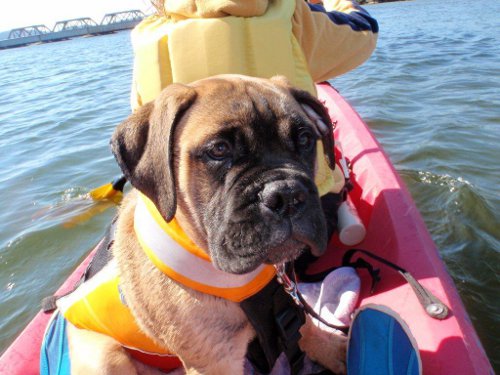
A canoe trip won’t require the aerobic capacity that a long backpacking trip would, but you might need a dog PFD. Canine personal flotation devices are a must for non-swimmers, of course, but even dogs that can swim could use a little help. A friend has a Staffordshire Terrier (Pit Bull) that loves the water but swims like a U-boat. Dogs can get tired too, and like people, they can drown if they don’t monitor their fatigue level, and most energetic dogs don’t realize they’re tired until they’re really tired.
In some areas, I prefer to give my dogs water that has been purified. This may sound overly cautious, and it’s true that most dogs can drink stuff that would send us to the ER. But in some urbanized areas, there are pathogens in the water that you wouldn’t drink, so why subject her that same stuff? Amoebic Dysentery can give your dog the runs. Not good for disposal etiquette. Whether it’s filtering or a chemical treatment, just consider it.
So that’s the dog stuff. What about the owner stuff?
Trail Etiquette
You love your dog, clearly. Not everyone does, so if you’re backpacking, the etiquette is to step off the trail and control your dog. An overly-friendly Lab can knock a backpacker off her feet, causing embarrassment at best and injury at worst. So control your dog.
A dog that runs back and forth on a trail is fine, if you’re in a low-use area. On some trails you’ll see a lot of people, and some of them came to the woods or water to escape civilization. Some of them don’t like dogs. Assure them your dog is under control and not aggressive. I would stress the under control part first. “Oh, she’s harmless…” is subjective, and if the other hiker or paddler has had a bad experience with a dog in the past, “she’s friendly” means nothing, whereas “she’s under control” means everything.
About Poop
If you came across a hiker taking a dumper in the middle of the trail and walking off, you’d be mortally offended and likely grossed out. Dog feces are not pleasant for anyone. No one expects you to carry out the poop, but you should handle it as you would your own, depending on the environment you’re in. If you’re in cathole country, dig a small hole and put your dog’s little gift into the soil.
Now I can hear some of you saying, “Does a bear, well, you know…” Yes, a bear is an arboreal defecator. You can choose to take your dog off into the woods and make a steamer, but you are bringing a different type of poop to an area that is not used to it. If a gentleman takes a dog as a companion, a gentleman deals with the ramifications.

Dog First Aid
A dog can be injured just as surely as you can. Your dog is not necessarily a good judge of what she can and can’t do. Winnie was cautious and trustworthy. Gracie is fearless, and she pays for it sometimes. Scrambling over rocks may be fun for you, but it’s an invitation to an injury if you’re not careful. If your dog does hesitate, this means you should wake up. Dogs can be smarter than you.
The most common injuries are to a dog’s foot pads. They are not thorn-proof and a little thorn can cause a lot of pain. Dog’s feet have a lot of innervations, just like ours. There’s no walking it off.
Whether it’s a thorn or a fishhook, a lot of the first aid for dogs is the same as for you. The big difference is pain management. Dogs do not tolerate human NSAIDS or pain relievers. Your veterinarian can prescribe a few good pain relievers, such as Rimadyl and Tramodol.
Rimadyl is the equivalent of Ibuprofen for adults. It can help with aches and pains and is good thing for your older dog the morning after an overly exuberant climb. Tramadol is a synthetic opiate, so it’s more powerful but can make your dog drowsy. For aches and pains, my vet recommends Rimadyl. For more chronic pain, Tramadol works well. When Alice strained her shoulder we put her on Tramadol for a few days. It helped her stay a little more relaxed so she would heal better.
Then there are other critters, large and small, that can be a threat. Larger mammals such as bears and moose generally avoid humans if we avoid them, but a curious dog can be killed with a moose kick in seconds, especially if there are calves. Porcupines, as previously mentioned, can be nasty. Skunks and raccoons can transmit rabies with just a nip, and skunks have other capabilities that are unnecessary to explain. Small mammals can scratch the nose of a curious dog.
Ticks can be a problem in tick country. We do tick inspection every night, and it might take a little bit of searching, especially with deer ticks, the carriers of Lyme Disease. Wood ticks are easier to find. Treat them as you would with a human. If they’re not embedded yet, it’s easy. I throw them onto the fire grate, where they sometimes make a satisfying pop.
Consider immunizing your dog for Lyme. It’s a controversial subject, but I have done it for years with no ill effects. Your dog, your call.
The big thing to remember when it comes to first aid and your dog is that if your pooch gets hurt when you’re out in the wilderness, you will have to find a way to get her back home. Keep that in mind when you’re planning your trip, thinking about the terrain you’ll be covering and how far out from civilization you’ll be, and calculating whether to take a risky detour.

All this shouldn’t discourage you from taking your canine companion on a wilderness excursion. It just requires more planning and a little more awareness of your dog’s capabilities. In finding that out during your pre-trip planning, you just may end up growing closer to your loyal pooch.
Some of my best wilderness expeditions have been solo trips with a well-behaved dog. Sometimes they’re the perfect companion…they watch, they learn, they love, and they snuggle you at night. They’ll sit and watch the glowing coals of a campfire and fall asleep on your feet. There’s nothing better than that at the end of a long day.
Do you take your dog camping or on other wilderness expeditions? Share your tips for navigating the great outdoors with a pooch at your side!
*I use she because a) I hate the he/she thing, and b) all my dogs have been bitches. My experience is that they tend to be smarter and lower maintenance once the plumbing has been removed.



